 0
0 When you think about fashion’s past, the runways seemed to have a great influence over what became regular occurrence in popular culture. Today, however, roles have been reversed. Instead of fashion influencing the public, many times it seems as though the public — and what the public will pay for — is what influences fashion.
Unlike 30, 20 or even 10 years ago, today we have we have myriad celebrities designing their own lines and reality TV shows making a giant splash in the style scene. And with the Internet greatly decreasing magazine sales and creating more competition for designers (it seems that nearly every one with an inkling for clothing design can now put their work out there for the masses to see and buy), more and more magazine editors and fashion designers are preoccupied with creating a product that’s easy to sell, as opposed to a product that’s purely innovative
Kristin Chenoweth, Lisa Rinna and Brooke Burke wearing the Women’s Ottoman Pencil Dress from Kardashian Kollection.
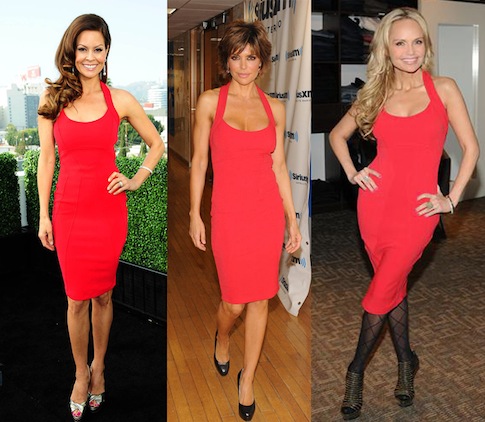
Credit: KhloeKardashian.Celebuzz.com
We would be unimpressed with art that was driven only to please the eye. True art lovers want to be inspired, influenced and even changed by what they see. A beautiful picture of a flower has its purpose, but flower after pretty flower gets boring very fast.
Fashion is like art. It should strive to provoke and evoke. It should dare to go there and not merely be manufactured for the sake of a quick and easy paycheck.
The History of Fashion Design entry on Wikipedia says, “For many of the own-label designers who emerged in the early years of the 21st century, financial factors became increasingly critical. Many new young talents found they now depended on investors (to whom, in extreme cases, they would even surrender their names) and were always burdened by the risk that their partners, motivated by market realism and the desire for quick returns, would severely restrict their autonomy.”
If this continues, do we risk having a “blip” in the fashion timeline — a period when fashion is uninspiring to future generations? What are your thoughts? How do you think today’s fashion will be remembered in the years to come?
Fall 2011 – 60s Vibe!
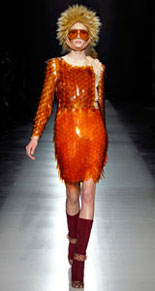
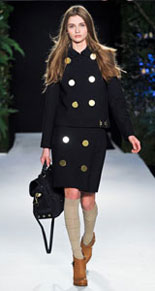
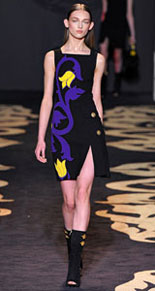
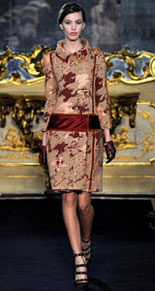
Credit: Style.com
70’s/Boho Trend
Spring 2008 Ready-to-Wear
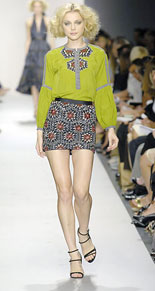
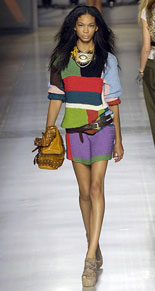
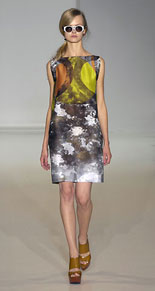
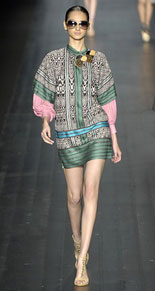
Credit: Style.com
By Wendy Rose Gould
Posted by Wendy Rose Gould at 11:18 AM
bargain news , Fashion: Trends, Style, and Business , Insights , Opinions , Style , Trends , Trends |
 0
0 Some women fantasize about a Cinderella-esque destiny, others make it their goal to conquer the professional world and a few hope to make it big as a singer, writer, actor or artist. Then there are women, oftentimes 20 or 30 somethings, who strive for the elusive title — and all that comes with it — of a leading socialite. The main question regarding this, of course, is how does one actually become a socialite?
Various outlets, including New York Magazine, New York Social Diary and Allure Magazine, have compiled lists of current and former mega-socialites. But what qualities, characteristics and factors does a socialite make? How do they decide who makes the cut?
We’ve scoured these lists of leading socialites, many of which include women such as Jackie O., Olivia Palermo, Tinsley Mortimer, Pippa Middleton and, begrudgingly, Paris Hilton to determine the characteristics they all share. Based on that information, we’ve created a checklist of four qualities a woman must possess to be crowned a true socialite.
Money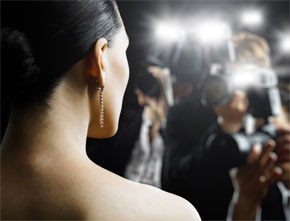
It’s crass to say it, but a socialite has got to be loaded. You simply can’t wear today’s hottest designers or go to the most expensive parties without a bloated bank account. Oftentimes, the money doesn’t belong to the socialites themselves. While it’s not always the case, their lifestyles are almost always funded by their parents or a lover. At least until they’ve built their name up enough to become successful “entrepreneurs” themselves.
Connections
A socialite’s address book is one of her most prized possessions. After all, it’s her key to party and gala invitations and meet ups with other big names. And, in order for a socialite to be talked about, she’s got to be seen out and about. And it’s kind of circular: the more she’s talked about, the more connections she’ll build.
Confidence
Have you ever seen a socialite who doesn’t stand tall and proud? Confidence is vital to the survival of a socialite. Without it, she’ll be far more likely to crumble under criticism. Not to mention, confidence makes any man or woman look more beautiful.
Looks
Again, this one’s crass, but an unattractive person just doesn’t bode well under the media spotlight. The good news is that socialites, as discussed above, have many dollars at their disposal. This allows for copious trips to the plastic surgeon and also secures the very best style and beauty team (heaven forbid a wrinkle or pimple appear).
By Wendy Rose Gould
Posted by Wendy Rose Gould at 04:01 AM
bargain news |
 0
0 There is little point in denying that ours is a celebrity-obsessed culture. The evidence is everywhere, from TMZ and tabloid newspapers to the insufferable Perez Hilton. We just can’t get enough of the delicious brand of schadenfreude that can only be found in high profile tales of debauchery, adultery and financial ruin.
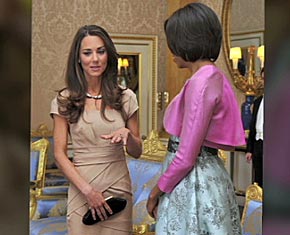 But we love a good love story too, and sometimes this causes certain women to be thrust into the limelight when they might have otherwise preferred to stay out of it. I’m talking about those that haven’t actively pursued fame, but instead have gained it as a result of their partner’s high profile. It’s sheer escapism, a projection of our own desires upon these so-called “normal” women.
But we love a good love story too, and sometimes this causes certain women to be thrust into the limelight when they might have otherwise preferred to stay out of it. I’m talking about those that haven’t actively pursued fame, but instead have gained it as a result of their partner’s high profile. It’s sheer escapism, a projection of our own desires upon these so-called “normal” women.
Kate Middleton is an example that immediately springs to mind. The hullabaloo in the United States over the Royal Wedding was incredible. The fairytale story of a small town girl becoming a princess was just too much for the media and the public alike too pass up – they couldn’t get enough.
We should spare a thought for Kate – or as she is now known, Catherine, Duchess of Cambridge. How is she to be expected to cope with the universal adoration that is suddenly being heaped upon her? She is, after all, just a regular, normal girl.
But of course the media doesn’t spare a thought for anyone, and has quickly gotten down to work analyzing her every move. She has effectively been reduced to the role of a voiceless runway model, there for us to talk about as if the sole purpose of her existence was to please us – the slobbering, ignorant, apathetic public. We created the fairytale narrative for her in the first place, so we should get to define her role within it, shouldn’t we?
This twisted sense of entitlement has manifested itself in the form of countless recent articles, focusing solely on Middleton’s appearance. Here is an extract from a piece in the Examiner (we shudder to think what the News of the World would be saying about her right now, had it not been sent to the scrap heap last week):
“[Kate] looked elegant and classy and very fairy-tale-like, but not unapproachable. The dress was that kind of dove gray that was elegant without being ‘look at me!’ Color-wise, people usually want to make a statement, but she knew all eyes were going to be on her anyway.”
With Kate, the word that just kept coming to my head to describe her was demure. Appropriate. I think she defines the new monarchy in that you feel like she’s young and hip, yet regal.”
This type of materialistic obsession with her appearance would seem bizarre in any other context. “The new monarchy,” “young and hip, yet regal” – how does one come up with such utterly vacuous garbage? They’ll be expecting to see the Queen sporting a pair of designer skinny jeans and Ugg boots next.
Though Middleton is a pertinent example, she is by no means the only woman reduced to the role of mannequin by the media and the “adoring” public. For instance there’s Michelle Obama, who has become a mainstay in gossip magazines, with little mention being made of her work with homeless shelters, women’s rights (the irony…) and all the other great causes she champions in her role as First Lady of the Unites States.
The saddest thing about all this is that the target audience for all of this celebrity “news” is women. This is leading to a perpetuation of the trend and allowing the status quo to remain in place, whereby women are there to be seen and not heard. It’s about time we start demanding that these high-profile women, however beautiful, are given a voice – a voice that will be listened to.
Posted by Staff Writer at 08:27 AM
bargain news , Points of View |
Bad news, we have to look like Blake Lively
 1
1 
I get my beauty news on WWD. Don’t get me wrong. I check Vogue, Allure, InStyle like any other gal out there, but I get my news on WWD. I came across an article on the shift in traditional notion of beauty that is emerging out of Hollywood, while checking out their beauty section last Friday.
I am used to WWD observing trends in beauty treatments or makeup, not in the medical field, but I guess PR companies share clients. Magazines establish relationships with PR companies, and end up covering things out of their realm of interest from time to time. One day I will share with you my theory on why bloggers are not the only ones to be blamed for advertorials.
Today I share the idea behind this article: Hollywood’s ideal is approaching something more human. The Barbie ideal makes room for a combination of Jennifer Aniston, Kate Hudson and Blake Lively. Well, let’s make this clear. Natural women are not the new norm, but the procedures are more refined and the results more settled. It is not that we are now allowed to let ourselves go – be old and wrinkled and not care about it. It’s just that we need more money, and employ better plastic surgeons, dermatologists, aestheticians, dentists, makeup artist and stylists.
This reminds me of a caricature I received from a friend years ago, after I moved to America.

Posted by Mirela Gluck at 12:00 AM
bargain news , BEAUTY , STYLE/BEAUTY |
